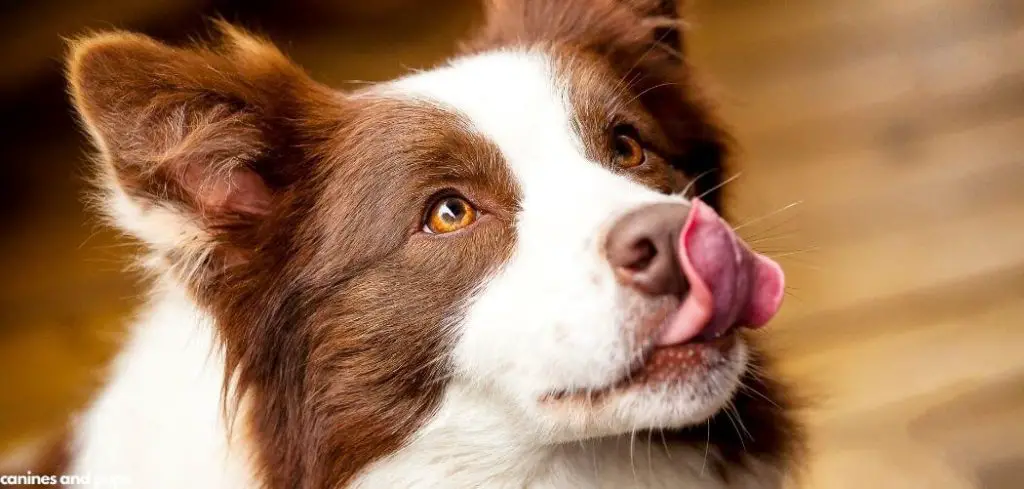It can be concerning when your dog won’t leave your side and keeps panting as they follow you from room to room.
This behavior can feel confusing — especially if it happens suddenly or more often than usual.
Understanding what’s behind this mix of restlessness and attachment can help you know whether it’s a sign of emotional distress, discomfort, or something more serious.
We outline the common reasons for your dog panting and following you around, what you can do at home, and when to seek veterinary help.
Dog Panting and Following Me Around — Why It Happens
Your Dog panting and following you around often signals anxiety, stress, or a strong need for reassurance. Dogs may pant when they’re nervous or overheated, and the constant following—also known as clingy behavior—can point to separation anxiety, pain, or confusion (especially in older dogs).
Sometimes, it’s simply your dog seeking comfort or trying to stay close because they sense something unusual, such as a change in routine or your mood.
If the panting is persistent, occurs with restlessness, or happens even when the environment is calm and cool, it’s best to have your vet check for pain, illness, or anxiety-related causes.

Dog Panting and Following Me Around: Common Causes
Anxiety or Stress
Dogs experiencing anxiety often exhibit excessive panting and a tendency to stay close to their owners.
Panting helps regulate body temperature, but when paired with clinginess, it may signal emotional distress.
Signs to watch for include trembling, whining, pacing, or hiding. Anxiety in dogs can stem from separation fears, loud noises, or changes in the environment, and addressing the root cause is crucial to reduce stress and improve overall well-being.
Read more: Dog Panting and Being Clingy (What It Means)
Pain or Discomfort
Panting combined with constant following can indicate pain or physical discomfort. Dogs may stick close to their owners as a form of reassurance or because they are unsure of navigating discomfort alone.
Look for other indicators such as limping, difficulty standing, or sensitivity to touch.
Prompt veterinary assessment is essential to diagnose underlying issues such as arthritis, dental pain, or internal problems that could be causing distress.
Illness or Fever
A dog that is panting excessively and following you around may be signaling illness or fever. Panting is one way dogs attempt to cool themselves when their body temperature is elevated.
Additional signs can include lethargy, loss of appetite, vomiting, or diarrhea. Conditions such as infections, heatstroke, or metabolic issues like Cushing’s disease can manifest this way and require veterinary attention.
Hunger or Thirst
Sometimes, panting and close following can simply indicate that your dog is hungry or thirsty. Dogs may pace, pant, and stick close to their owners to communicate a need.
Observe whether your dog has been fed recently, has access to fresh water, and monitor any patterns in behavior.
While less urgent than illness, consistent signs of hunger or dehydration should be addressed promptly.
Excitement or Overstimulation
Dogs often pant and follow you closely when they are excited or overstimulated. Playtime, visitors, or anticipation of walks can trigger these behaviors.
Other signs may include tail wagging, jumping, or vocalization. While typically harmless, excessive panting due to excitement can become stressful for some dogs, so providing breaks and calm environments is important.
Cognitive or Age-Related Changes
Older dogs or those with cognitive dysfunction may display increased panting and follow their owners more frequently.
These dogs can feel insecure or confused, leading to clingy behavior. Watch for other signs of cognitive decline, such as disorientation, changes in sleep patterns, or decreased responsiveness.
Understanding and adapting to these changes can improve your dog’s comfort and quality of life.
What to Do If Your Dog Is Panting and Following You Around
Observe your dog’s overall behavior and context to determine potential causes. Ensure they have access to fresh water and a comfortable, quiet space to rest.
Maintain a consistent routine for feeding, exercise, and mental stimulation to reduce stress-related behaviors.
If the panting and following are linked to anxiety, consider using calming techniques such as gentle petting, soothing music, or interactive toys.
Avoid punishing clingy behavior, as this can increase stress. Gradually desensitize your dog to triggers that may cause excitement or fear, and reinforce positive behavior with treats and praise.
Monitor for signs of pain, illness, or cognitive decline. Keep a diary of your dog’s behavior, including when panting occurs, any accompanying symptoms, and patterns of following you around. This information can be invaluable when consulting your veterinarian.
Provide regular veterinary check-ups to rule out underlying medical conditions that could be causing panting or clinginess.
Preventive care, including vaccinations, dental care, and age-appropriate health screenings, helps maintain overall well-being.
When to Call or Visit Your Vet
Seek veterinary attention immediately if your dog shows persistent panting with lethargy, vomiting, diarrhea, or a sudden change in behavior. High fever, labored breathing, or signs of pain require urgent assessment.
Rapid panting combined with drooling, unsteady gait, or seizures should be treated as an emergency. Dogs with existing health conditions, such as heart or respiratory disease, are at higher risk and need prompt evaluation.
If you notice a sudden onset of clingy behavior or excessive following in an older dog, schedule a veterinary visit to rule out cognitive dysfunction or neurological issues. Early diagnosis can improve management and quality of life.
Read more: Dog Panting and Ears Are Hot (Here’s why)
Key Takeaway
Panting and following behavior in dogs can range from excitement and affection to signs of stress, pain, or illness.
Observing your dog’s overall behavior, providing comfort, and ensuring basic needs are met is the first step.
When behaviors persist or are accompanied by concerning symptoms, consult your veterinarian for proper assessment and guidance. Attentive care and understanding can help your dog feel safe, comfortable, and happy.
